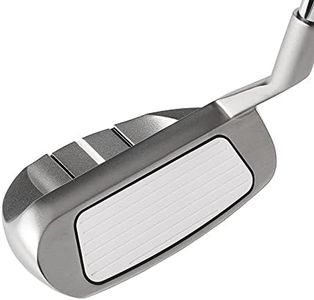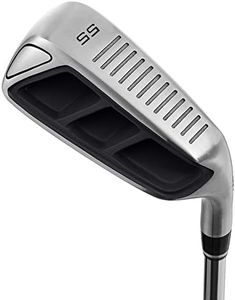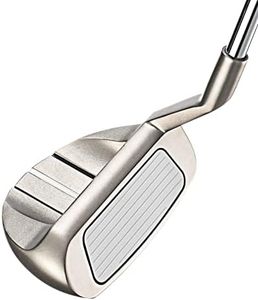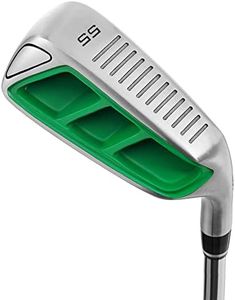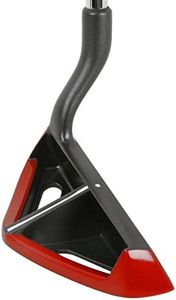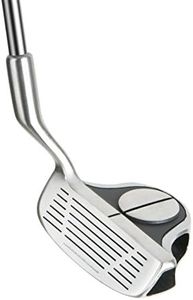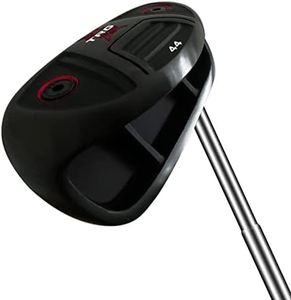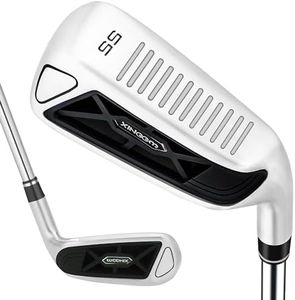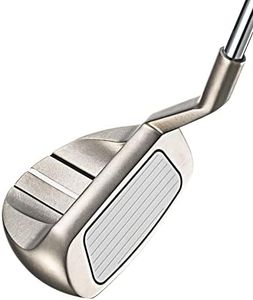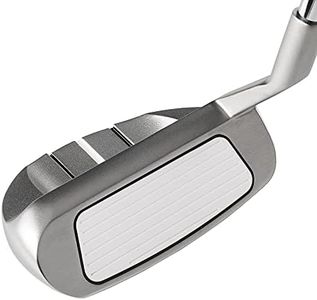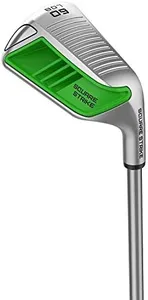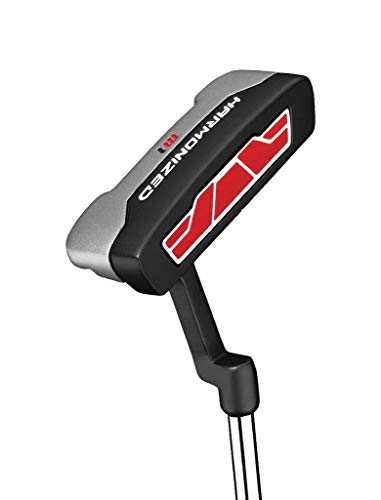We Use CookiesWe use cookies to enhance the security, performance,
functionality and for analytical and promotional activities. By continuing to browse this site you
are agreeing to our privacy policy
10 Best Golf Chippers
From leading brands and best sellers available on the web.Buying Guide for the Best Golf Chippers
Choosing the right golf chipper can really help you improve your short game around the green. A chipper is a special type of club designed to make chipping easier and more consistent for golfers who struggle with traditional irons or wedges. When looking for a chipper, you’ll want to focus on a few key aspects to ensure that the club matches your comfort level, style of play, and specific on-course needs. The right chipper should help you get the ball on the green and rolling toward the hole with minimal effort, so pay attention to features that suit your stroke and skill level.Loft AngleThe loft angle of a chipper is basically the angle of the clubface compared to the ground. This determines how high and how far the ball will go when you hit it. Most chippers have a loft between a putter (about 3-4 degrees) and a short iron or wedge (around 32-37 degrees). Lower lofts make the ball roll more and hop less, which is useful for longer runs across the green, while higher lofts allow you to carry the ball over thicker grass or obstacles for a softer landing. To pick the right loft, think about the type of shots you struggle with and the typical conditions of your local courses. If you mainly need help with bump-and-run shots, a lower loft is good. If you face thicker rough or need to clear obstacles, a higher loft is better.
Clubhead DesignChippers often have a wide sole and a design closer to a putter or a wedge. A wide sole helps prevent the club from digging into the ground and offers more forgiveness on mis-hits. Some chippers have alignment aids on the top, which make it easier to aim correctly. If you have trouble with hitting fat or thin shots, look for a chipper with a larger and more forgiving sole. If you prefer more precision and feel, a slimmer sole might suit you.
Length of the ClubChipper length usually falls between a putter and a wedge. Standard chippers are close to putter length, which promotes a more controlled, pendulum-like stroke similar to putting. A shorter club offers more accuracy for those who like to mimic a putting stroke, while a longer chipper can give a bit more flexibility for different stances and lies. Choose a length that feels comfortable in your hands when you use your regular chipping stance; comfort here leads to more confident, repeatable results.
Lie AngleThe lie angle is the angle between the shaft and the ground when the club sits flat. This affects how the clubhead strikes the turf. If the lie angle is too upright or too flat for your natural stance, you may hit shots off-target. Taller players, or those who stand more upright, often need a more upright lie, while shorter players or those who bend over more need a flatter lie. Try to match the chipper’s lie angle to your usual chipping posture, or consider getting it adjusted if you want the best fit.
Grip StyleGrip style varies between chippers. Some come with putter-style grips for a more stable, putting-like feel, while others have traditional golf club grips. The choice depends on your comfort and the stroke you want to use. If you plan to use a putting stroke with your chipper, a putter-style grip may feel more natural. Try to hold the club and see which grip gives you the most confidence and control.
Weight and BalanceThe overall weight and balance of the chipper can affect your feel during the swing. Heavier chippers tend to offer more stability and can help smooth out jerky motions, which is helpful for those wanting to keep the swing steady. Lighter chippers provide more feedback and may feel easier to swing quickly. Consider your current clubs: if you like heavier putters, you may prefer a chipper with more weight. If you prefer a lighter touch, look for one that’s easier to swing.
